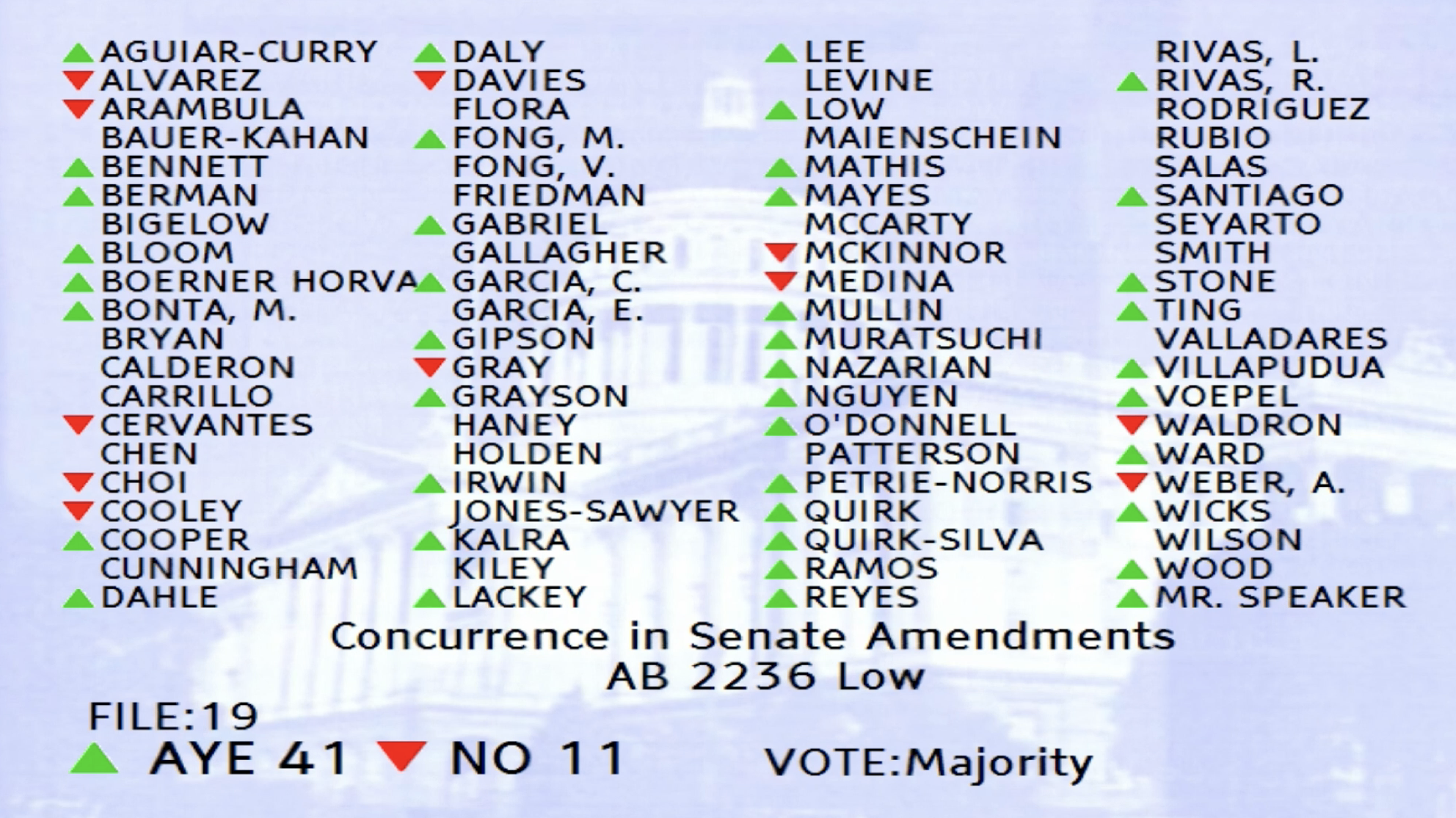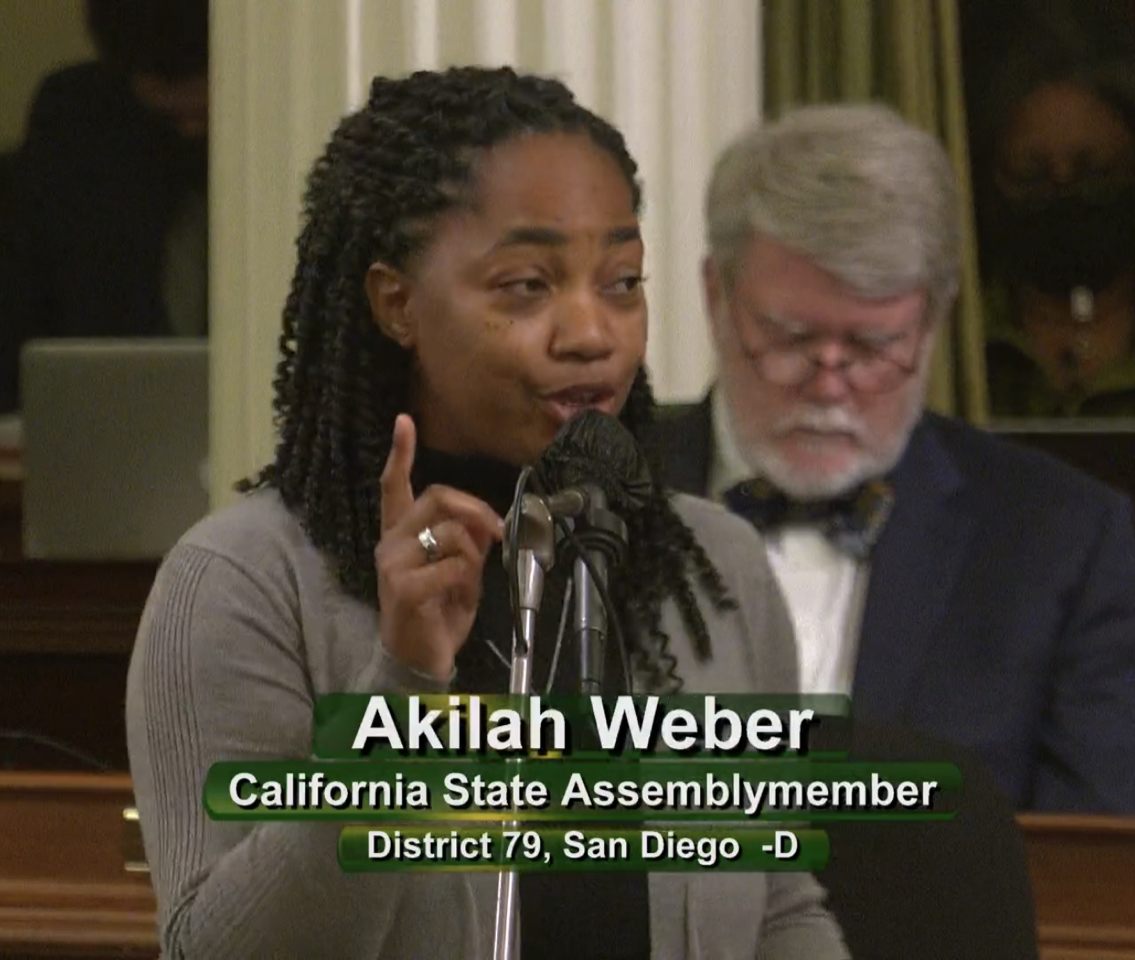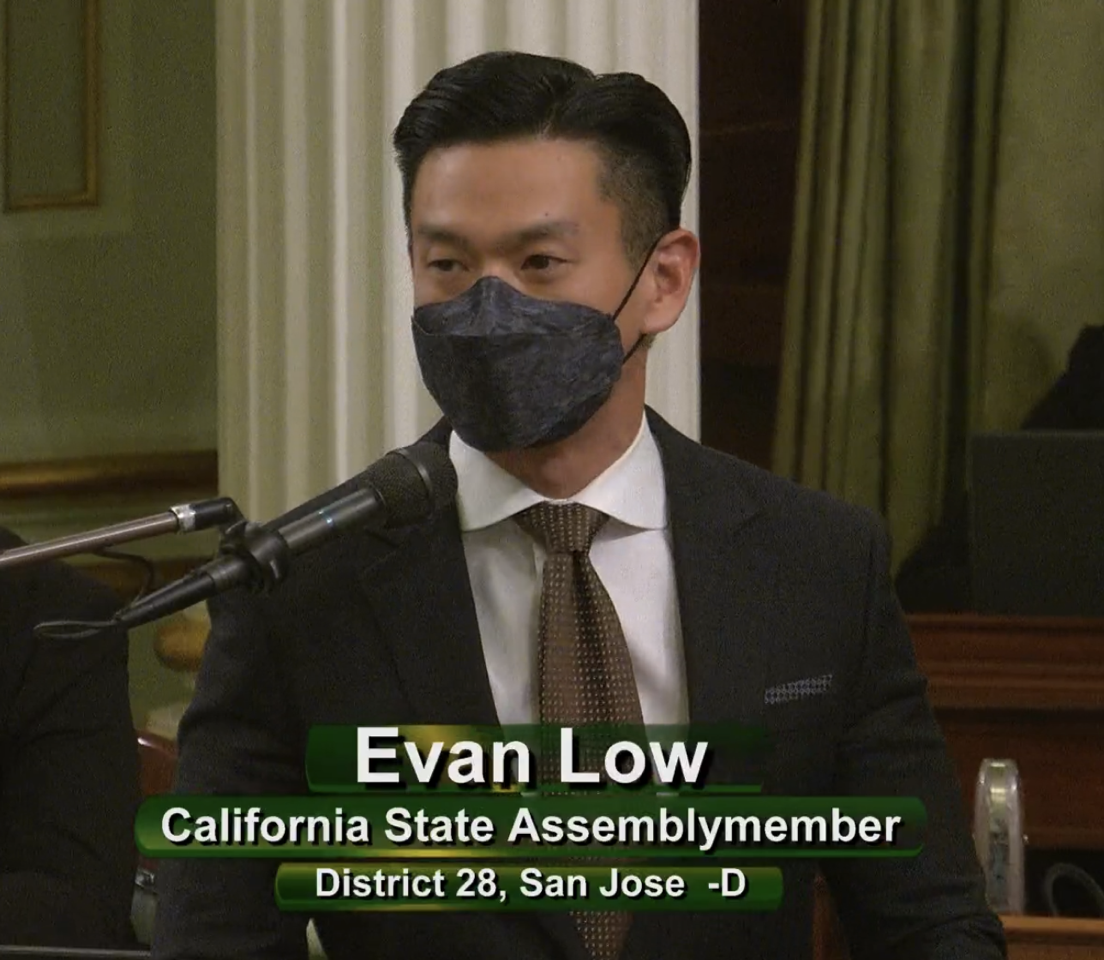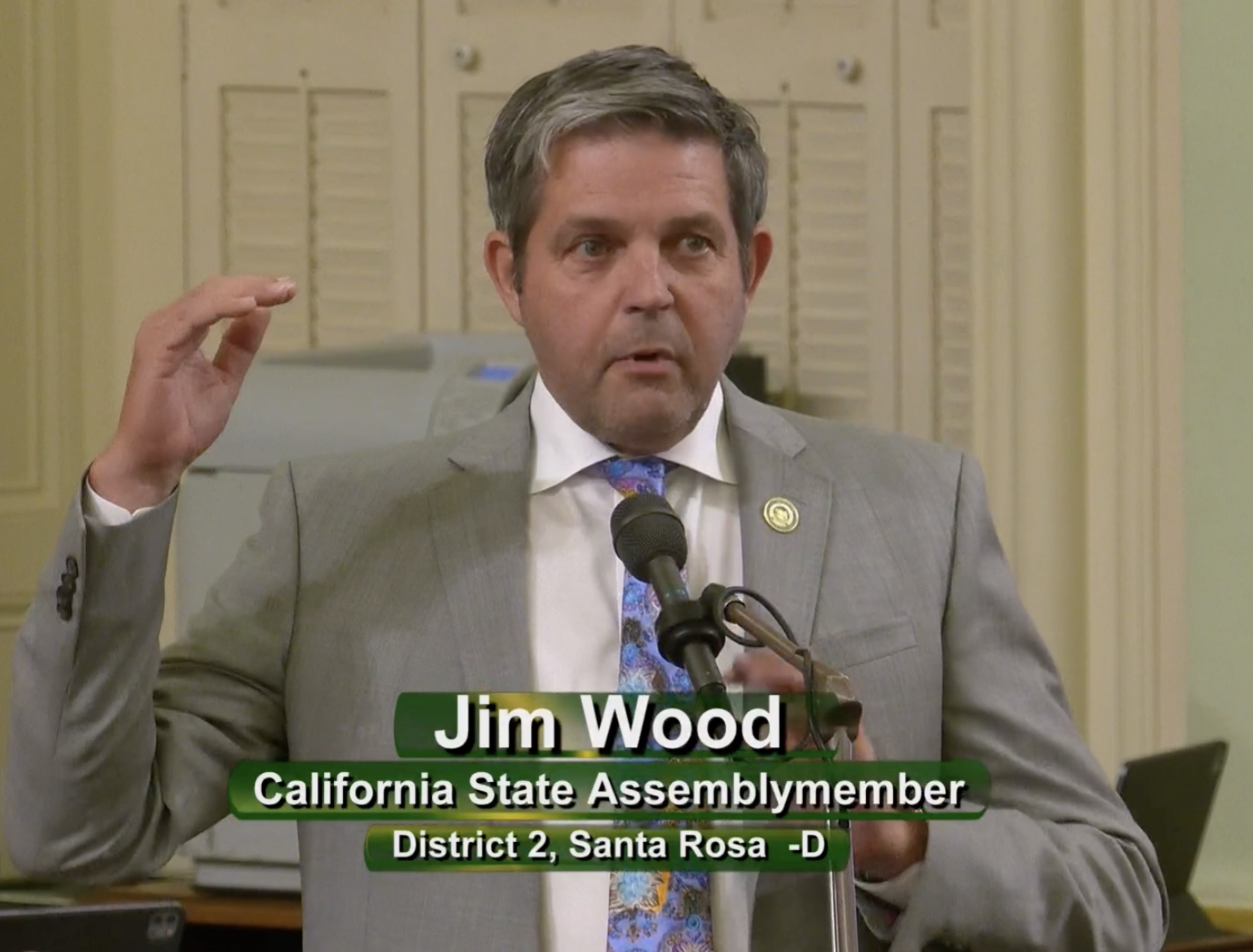 |
|
The final tally, which came at 11:50pm last night, gave the bill 41 votes in favor—exactly how many were needed for passage. Click image to enlarge. |
It’s a watershed moment for optometrists in California—and their colleagues across the country, too. Late last night, the state Assembly gave its final approval to bill AB 2236, which would expand the profession’s scope of practice in California to include several advanced procedures, including lasers and some incisional surgeries. The victory came at 11:50pm Pacific time on the last day of the legislative calendar, after strident opposition nearly sunk the bill earlier in the session. (See the video below to watch the floor debate leading up to the vote.)
AB 2236, introduced in February by Assemblymember Evan Low, needed 41 votes to achieve final passage, following a successful vote in the California Senate earlier this week that sent it back to the Assembly for that body’s concurrence with several amendments. The governor’s signature, expected in the next 30 days, will be the final step to California becoming the 11th state to include lasers in optometry’s scope of practice.
If/when the governor signs off on the proposed law, optometrists in California will—under specific circumstances outlined in the bill—be able to perform the following:
Three types of laser procedures: therapeutic lasers appropriate for the treatment of glaucoma (i.e., selective laser trabeculoplasty), peripheral iridotomy for the prophylactic treatment of angle-closure glaucoma and posterior capsulotomy secondary to cataract surgery.
Lesion removal—skin tags, cysts and other non-cancerous growths.
Injections to treat eye conditions (subcutaneous, intramuscular, subconjunctival and intralesional injections).
Corneal collagen crosslinking in keratoconus.
A few amendments had been made to the bill since its introduction, which is what the Assembly approved with their vote yesterday. According to Kristine Shultz, executive director of the California Optometric Association (COA), one of these amendments addresses continued competency. “At every two-year license renewal, an optometrist is required to perform at least one of each procedure (rather than two in each category),” she explains. “This was intended to address the opposition's concern that all procedures may not be performed regularly.” None of the other amendments significantly altered the bill, Ms. Shultz says.
 |
| Asm. Weber, an OB/GYN, led the opposition to the bill, claiming the bill’s insufficient training requirements would put California citizens at risk if optometrists were granted the right to perform minor surgeries. Click image to enlarge. |
Leading the opposition in last night’s floor vote was Assemblymember Akilah Weber, MD, an OB/GYN, who rose to speak against it. “This is not the bill that we voted off the Assembly floor,” she opened with, citing the recent amendments. “This bill is much more dangerous than the original one,” she asserted in the legislative session.
“It’s not a question about scope of practice. It’s not a question for me if optometrists should do surgical procedures—they should,” Asm. Weber stated. “But it’s a question about the amount of training—hands-on, live training—that someone should do before we allow them to go out and practice independently.”
In light of these objections from Asm. Weber and others, the initial vote on the measure fell short by six votes. After some last-minute politicking on the floor, the bill received additional rounds of voting and ended with 41 “aye” votes in its favor. No additional amendments were taken between rounds of voting.
Those directly involved in optometric training for advanced procedures paint a different picture than the one offered by Asm. Weber of an OD’s suitability for these responsibilities.
“Students across all optometry schools, and doctors of optometry in post-doctoral education, are incredibly well trained on these procedures both didactically as well as with hands-on laboratory training, and have successfully been performing laser and in-office surgical procedures for many years in 10 states,” explains Nathan Lighthizer, OD, associate dean of NSU Oklahoma College of Optometry and a champion of optometric surgery, who has been training ODs for many years on these responsibilities.
 |
| Asm. Low, sponsor of the bill, mounted a spirited defense of the legislation late into the session in the face of opposition from Asm. Weber and an initial vote that didn’t measure up for passage. Click image to enlarge. |
“I have personally witnessed thousands of doctors go through post-doctoral laser and surgical training courses, and have seen nothing but success stories from classroom training to laboratory training to implementation in their practice,” Dr. Lighthizer says. “I have received emails and phone calls that are too numerous to count from doctors expressing how satisfied their patients have been” after optometric implementation of laser and other minor surgical procedures.
“I congratulate the California Optometric Association, and commend the California legislature for recognizing the current training and education of ODs across the country,” Dr. Lighthizer says.
Anticipated Impact
A multitude of benefits are anticipated to stem from this legislation. “This is an important step forward to increase access and care to patients in California,” says Melissa Barnett, OD, principal optometrist at UC Davis Eye Center. “It is also significant for doctors of optometry to be able to practice to their fullest scope in California.”
The most populous US state, California is home to more practicing optometrists than any other. In May 2021, the US Bureau of Labor Statistics (BLS) reported that there were 6,730 employed optometrists in California.1 Also using BLS figures, the number of ODs who currently have the right to pursue laser privileges in the existing 10 states with such laws is 4,570, meaning that this bill will more than double the number of ODs who can offer advanced procedures to their patients if they choose to undergo the necessary training regimen.
If ODs in the state pursue the opportunity, thousands of California residents will be able to receive more comprehensive care from their trusted primary eyecare provider without having to travel far, see an unfamiliar doctor or tolerate the longer wait times for an appointment typical of ophthalmic practices.
One particularly compelling argument in favor of the bill came from Asm. Jim Wood, DDS, a dentist by training who’s familiar with scope expansion battles in other areas of health care.
 |
| Asm. Jim Wood, a dentist who has supported scope expansion bills previously, gave an impassioned defense of the bill that cited its positive impact on low-income residents in the Medi-Cal insurance plan. “About 85% of optometrists accept Medi-Cal. I’m pretty sure that number is way smaller for ophthalmologists—way smaller,” he told the legislators in last night’s session. Click image to enlarge. |
“Back up for a second and understand why we’re even here having these kinds of discussions,” Asm. Wood encouraged the legislators in his remarks last night. “People have a hard time accessing services like this.” He then explained that a third of California residents rely on Medi-Cal, the state’s assistance program for low-income citizens. “About 85% of optometrists accept Medi-Cal. I’m pretty sure that number is way smaller for ophthalmologists—way smaller.”
The COA’s president, Dr. Amanda Dexter, who practices in San Diego, says, “This is a good bill for California citizens. It allows optometrists to practice to the fullest extent of their license. There is additional training and testing to make sure optometrists are competent to perform these procedures,” she explains. “It will mean my patients will get the right care at the right time and don’t have to wait months to see an ophthalmologist for something that I can do for them while they are in my chair.”
The victory also sets a high-profile precedent for other states in their legal battles to gain laser privileges and other aspects of an expanded optometric scope. Unfortunately, some states and cities are more accepting of scope expansion in optometry than others, Dr. Dexter explains.
“Where I practice, ophthalmologists generally agree with us on the proper division of labor and politics don’t come into play,” she says. “It’s not controversial to have optometrists that are trained and competent doing the lower-level procedures that have low complication rates and free up physicians to perform more complex surgeries in tremendous demand right now like cataract surgery and retinal detachment related to diabetes,” Dr. Dexter explains, adding that this view is unfortunately not shared statewide.
Although the opposition will always put up a fight, optometry won this time—its biggest win yet—adding to the growing momentum across the nation to increase the field’s practice rights.
If signed by Gov. Newsom, the bill would go into effect on January 1, 2023, and is expected to take roughly two years to implement.
| US Bureau of Labor Statistics. Occupational Employment and Wages, May 2021: 29-1041 Optometrists. Updated March 31, 2022. https://www.bls.gov/oes/current/oes291041.htm. Accessed August 31, 2022. |


